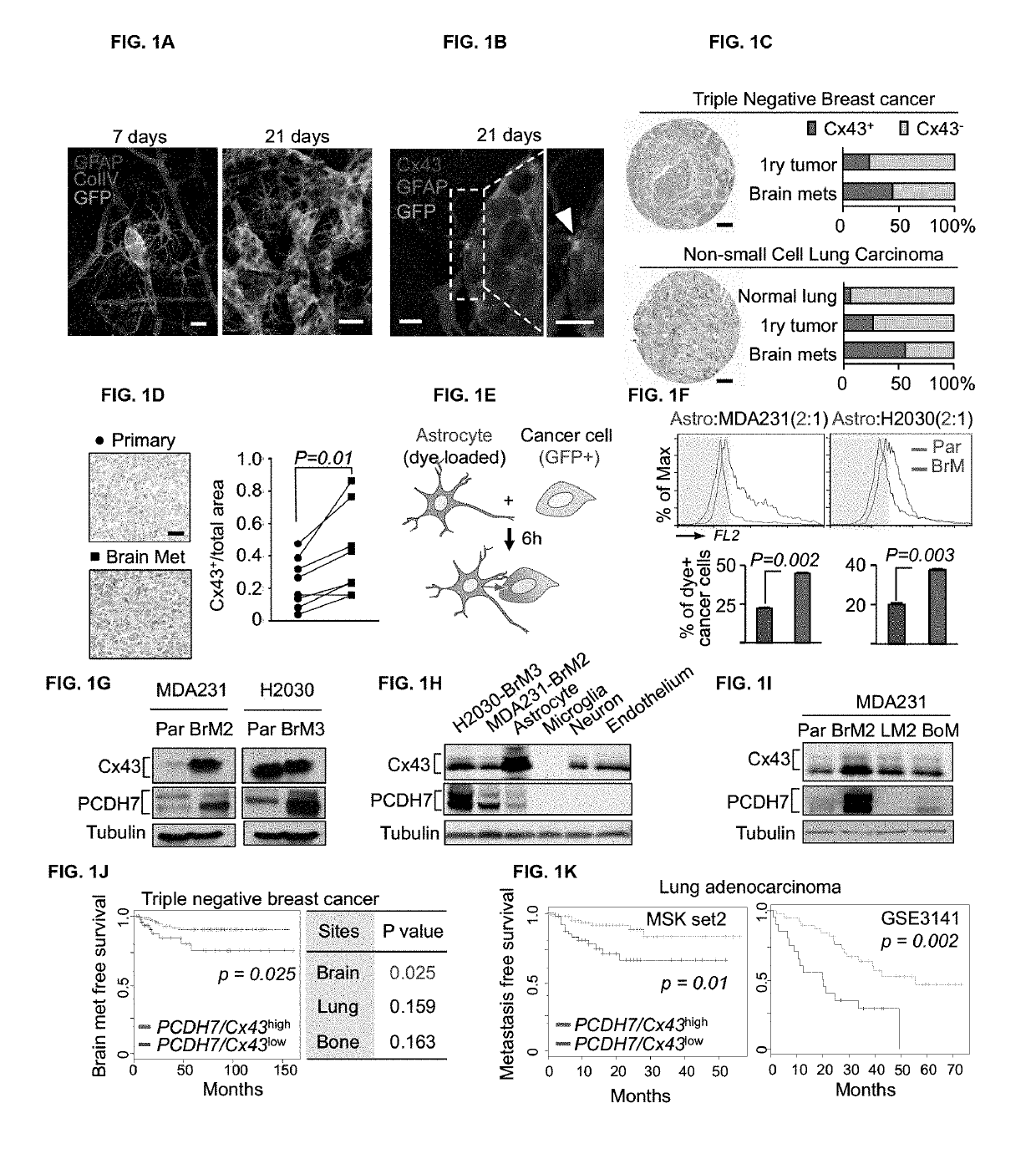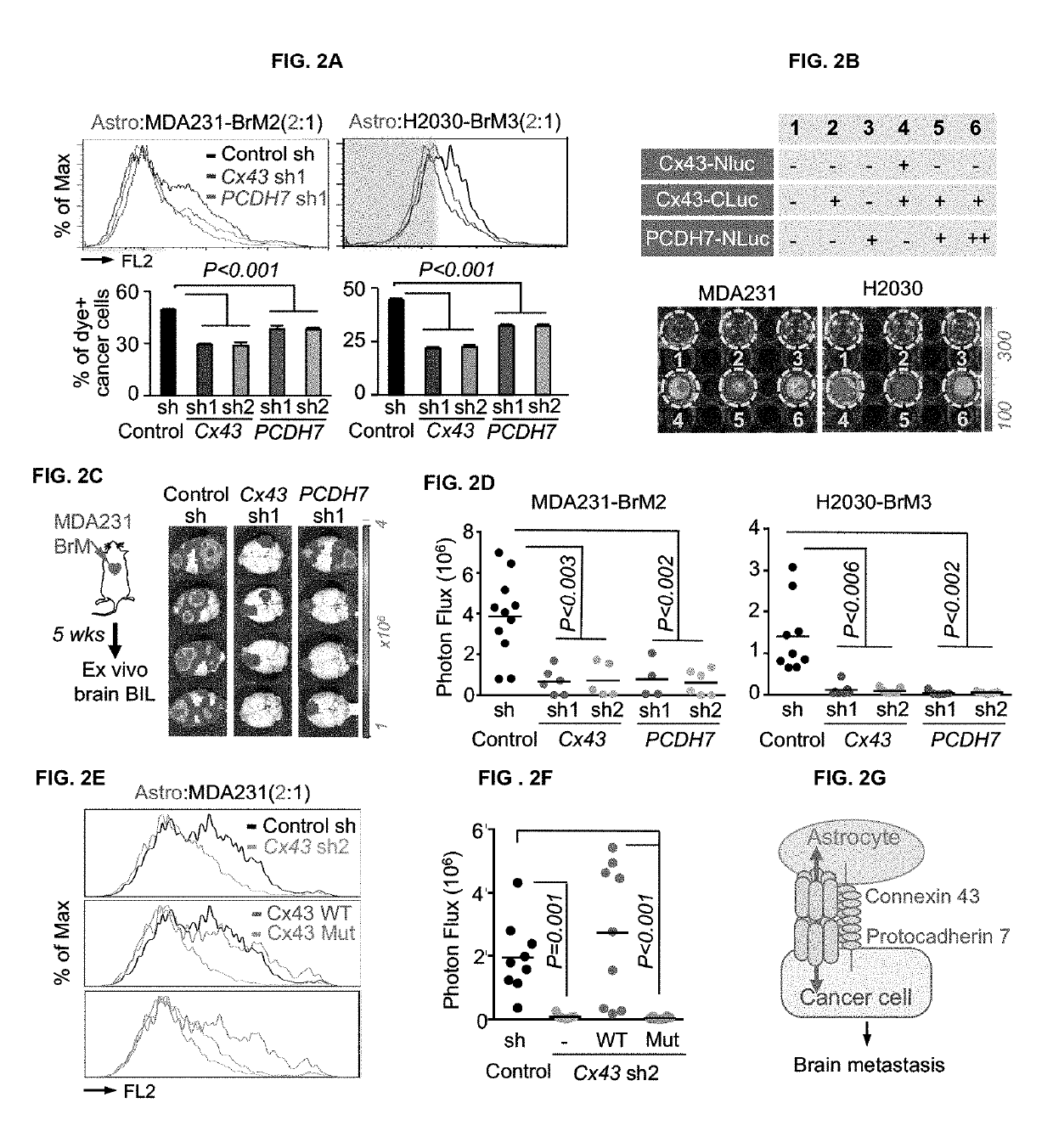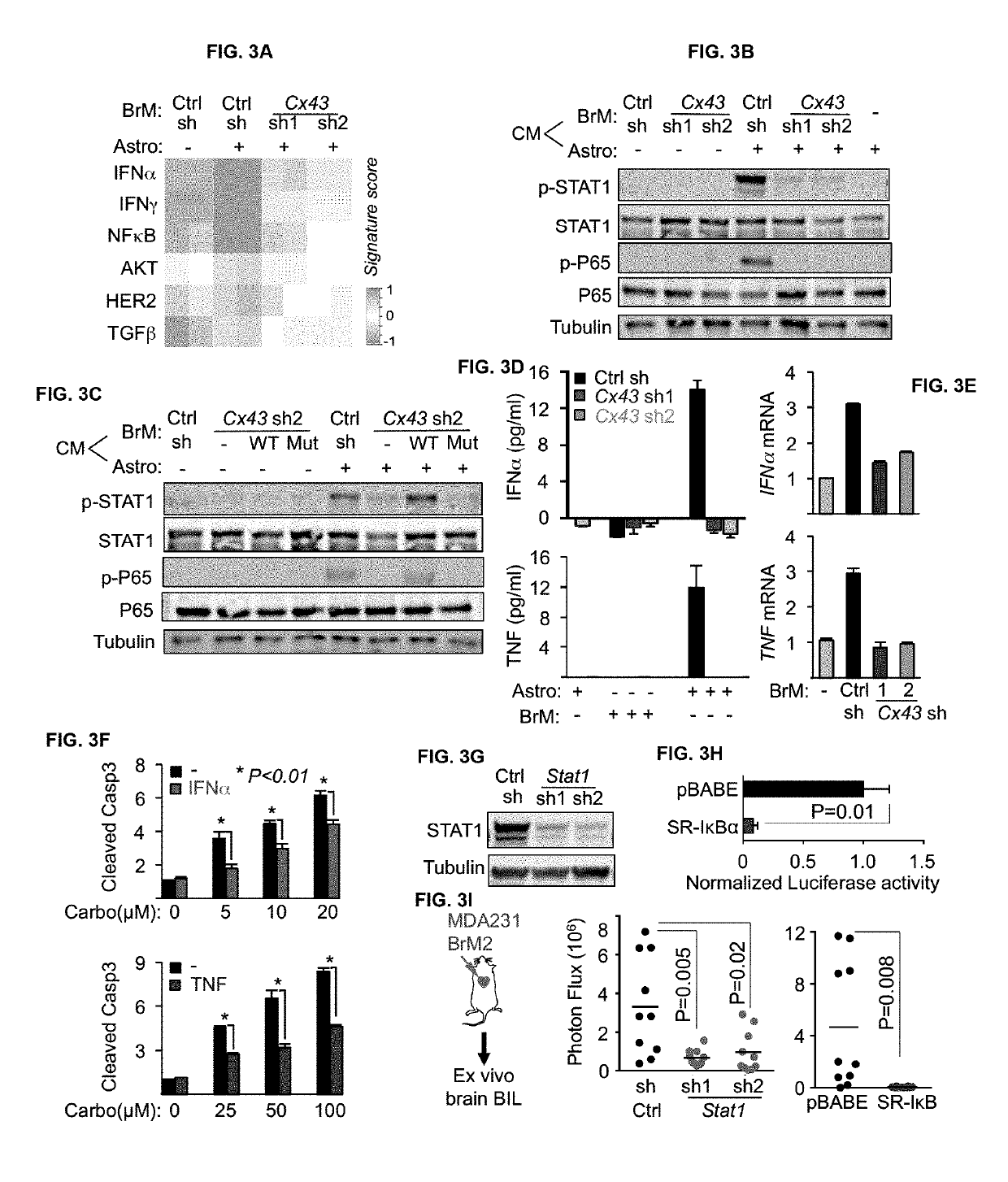Methods for treating brain metastasis
a brain metastasis and brain metastasis technology, applied in the field of brain metastasis treatment, can solve the problems of limited control of brain metastases, unipolarity of astrocytes in metastasis, etc., and achieve the effects of reducing the progression of brain metastases, promoting brain metastasis, and inhibiting gap junction function
- Summary
- Abstract
- Description
- Claims
- Application Information
AI Technical Summary
Benefits of technology
Problems solved by technology
Method used
Image
Examples
Embodiment Construction
[0033]For clarity and not by way of limitation the detailed description of the invention is divided into the following subsections:
[0034](i) Gap junction inhibitors;[0035](a) Connexin 43 inhibitors; and[0036](b) Protocadherin 7 inhibitors;[0037](c) Assay for gap junction activity / inhibition;
[0038](ii) cancer targets;
[0039](iii) pharmaceutical formulations; and
[0040](iv) methods of treatment.
5.1 Gap Junction Inhibitors
[0041]The present invention provides inhibitors of gap junctions (e.g., gap junction antagonists) for use in the disclosed methods. In certain embodiments, gap junction inhibitors can include compounds, small molecules, chemicals, polypeptides, nucleic acids and proteins that inhibit and / or reduce the expression and / or activity of gap junction components or inhibit and / or reduce the formation, patency, signaling and / or activity of gap junctions.
[0042]In certain non-limiting embodiments, gap junction inhibitors that are small molecules include carbenoxolone, glycyrrhetin...
PUM
| Property | Measurement | Unit |
|---|---|---|
| concentrations | aaaaa | aaaaa |
| retention time | aaaaa | aaaaa |
| retention time | aaaaa | aaaaa |
Abstract
Description
Claims
Application Information
 Login to View More
Login to View More - R&D
- Intellectual Property
- Life Sciences
- Materials
- Tech Scout
- Unparalleled Data Quality
- Higher Quality Content
- 60% Fewer Hallucinations
Browse by: Latest US Patents, China's latest patents, Technical Efficacy Thesaurus, Application Domain, Technology Topic, Popular Technical Reports.
© 2025 PatSnap. All rights reserved.Legal|Privacy policy|Modern Slavery Act Transparency Statement|Sitemap|About US| Contact US: help@patsnap.com



